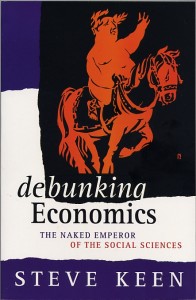
This is an unplanned post that partly pre-empts what I’ll be writing in the February Debtwatch Report, where I will explain in full my theory of money creation in a pure credit economy. So this is somewhat out of sequence, and will undoubtedly be badly explained compared to what I put together for February.
I will also have to finish this in a later post–probably in the first couple of days of the New Year–because Sydney’s fireworks beckon, and we have to be on board the cruiser we’re watching them from at 7pm. But what is here is part of a long-promised explanation of my model of money creation. In a couple of days I’ll publish the punch line, which is a newly developed model of a Ponzi Scheme.


